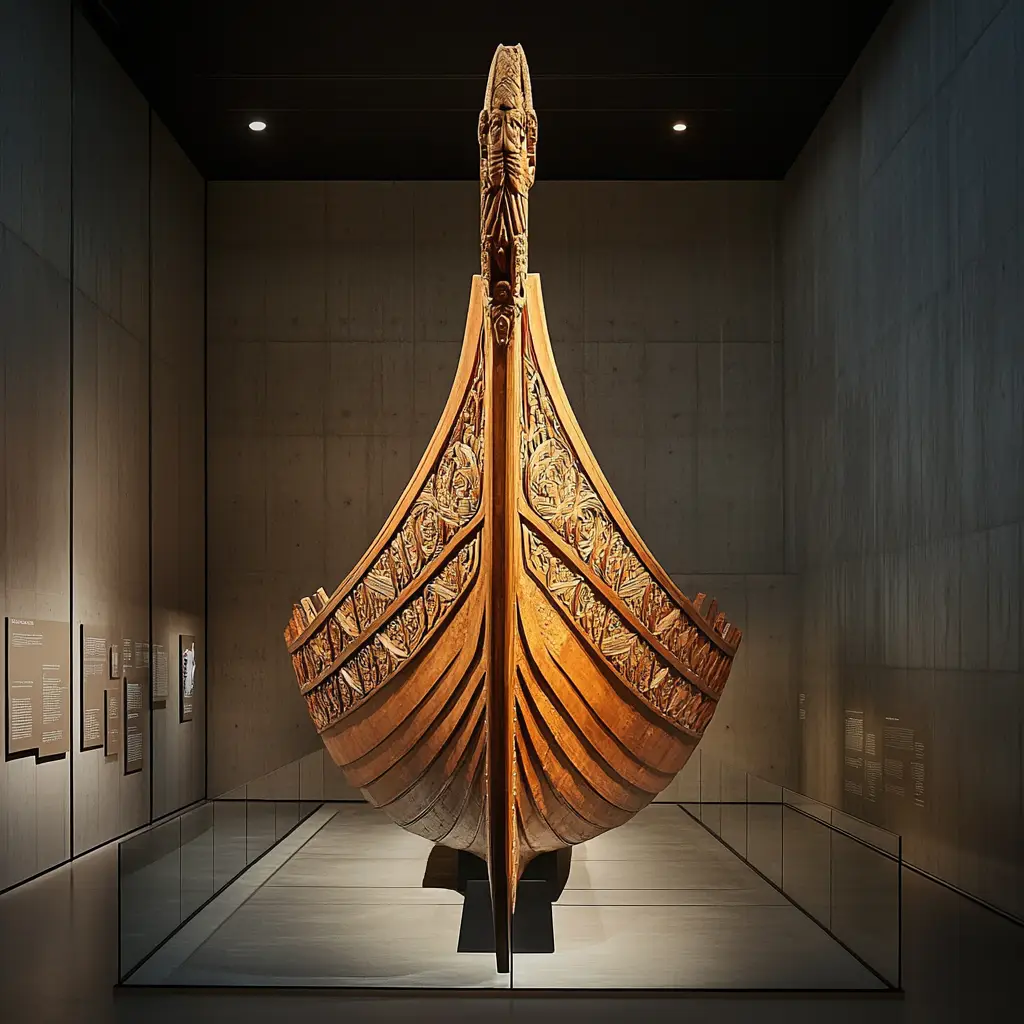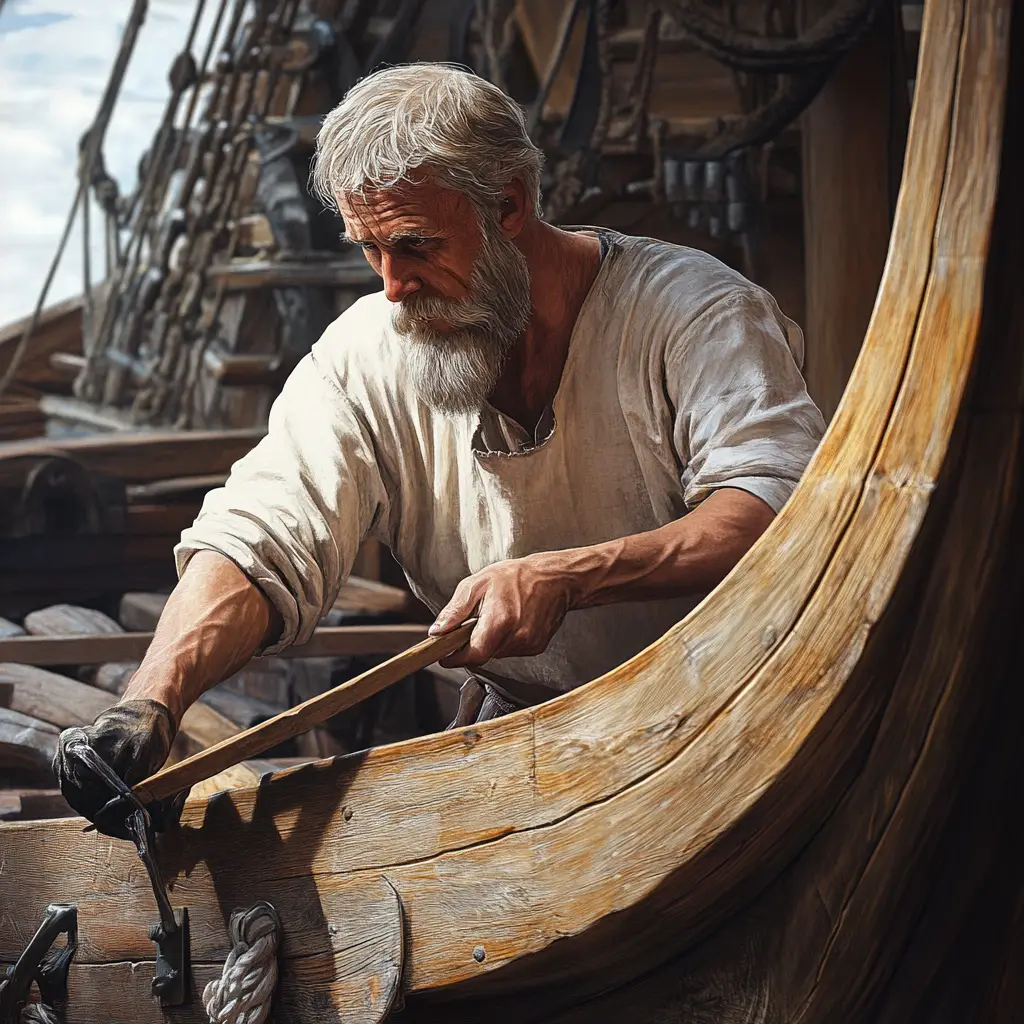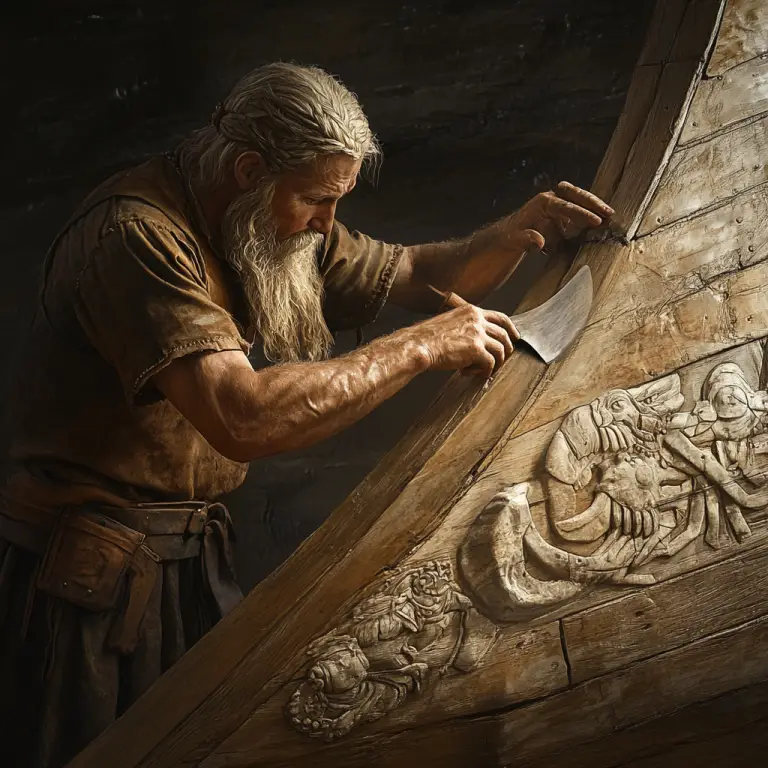Viking prow carpenters were highly skilled craftsmen responsible for shaping and assembling the striking and symbolic front section of a Viking ship—the prow. This part of the vessel often featured an intricately carved figurehead, typically representing a dragon, serpent, or other fearsome creature, designed to ward off sea monsters and intimidate enemies.
These carpenters used a combination of experience, intuition, and traditional techniques passed down through generations. Working primarily with seasoned oak and other durable timbers, they would carefully select and shape each piece by hand using axes, adzes, chisels, and drawknives. The process required a deep understanding of wood grain, strength, and flexibility to ensure the prow could withstand both rough seas and the stresses of long voyages.
Working primarily with oak and other durable timbers, prow carpenters used hand-forged tools such as adzes, axes, and chisels to carve intricate designs, often featuring dragons, serpents, or mythical beasts. These carvings served both decorative and spiritual purposes, believed to ward off sea monsters and intimidate enemies.
Viking prow construction was not merely practical; it was also deeply artistic. Carpenters would often collaborate with woodcarvers to incorporate detailed knotwork, animal motifs, and mythological scenes into the prow’s design, reflecting the beliefs and identity of the ship’s crew or owner. These carvings were more than decorative—they told stories, conveyed status, and embodied spiritual protection.
The prow had to be carefully balanced in both form and function. It was designed to cut cleanly through the water, enhancing the ship’s speed and manoeuvrability, especially in the rough waters of the North Atlantic. This required not only artistic talent but also deep knowledge of wood properties, boat dynamics, and structural integrity.
Prow carpenters typically worked in shipyards or coastal workshops, often as part of a larger team of shipbuilders. Their work reflected the values of Viking society—strength, elegance, and connection to the natural and spiritual world. Every prow was unique, often telling a story or honouring a chieftain, deity, or clan heritage.
Today, the legacy of prow carpenters lives on in surviving ship remains, museum reconstructions, and the continued fascination with Viking naval ingenuity. Their craftsmanship remains a testament to the artistry and engineering skill of early Scandinavian shipbuilding.



